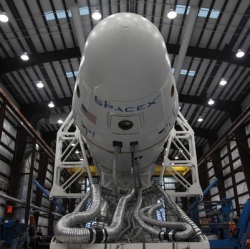
SpaceX founder Elon Musk has made it no secret that he plans to go to Mars, and it looks like he’s giving NASA’s ambitions a bit of a boost along the way. During a Falcon 9 launch, NASA sent a pair of chase planes up to take high-resolution images of the booster as it made a powered test landing on the surface of the Ocean.
The Falcon 9 is SpaceX’s attempt at a paradigm shift in spaceflight as the company works on a space launch system where all the major components from booster stages to spacecraft are able to return to Earth for a quick refueling and relaunching at a fraction of what current systems cost. Though still in its early stages, the powered landing system is already paying dividends to NASA, who sees the Falcon 9 as a source of data for future Mars missions.
In September, NASA sent up a pair of chase planes; one from NASA’s Scientifically Calibrated In-Flight Imagery (SCIFLI) project team, and one from the US Naval Air Systems Command Weapons Division’s Air Test and Evaluation Squadron-30 at Point Mugu, California. The idea was that by studying the Falcon 9 as it re-fired its engines at supersonic velocities, it would be a low cost way for both NASA and SpaceX to gather the needed data for building future spacecraft for making powered landings on Mars.
